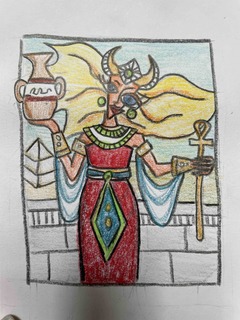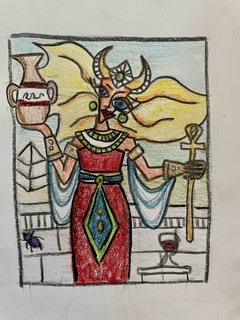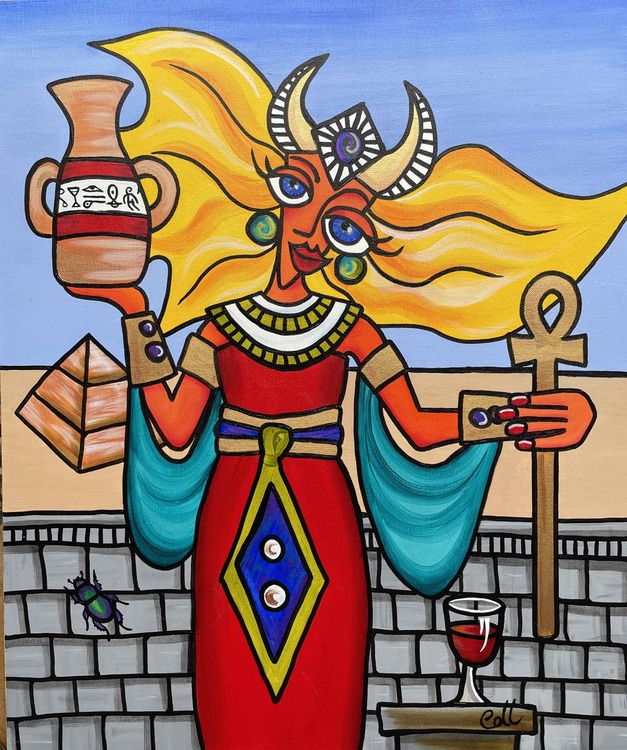Commissioned Artwork Made Easy: Insider Tips for Artists
Commissions, Yes or No?
Some artists do it, and some don't. Some like it, while others loathe it.
It's a double-edged sword that can work well for some artists or not so well for others. Still, if you want to make money from your art, there are sometimes things you may need to sacrifice when doing commissioned work. It can be a trap where you paint something you don't want to, but if you are careful and pre-prepared, you can avoid these obstacles and enjoy painting things for others.
To keep some control over the process, you need to clarify your boundaries and be clear about things to the person commissioning you. The final outcome of your work and whether it has the heart and soul in it that people like about it (Whether they are aware of it or not, it's what usually sells your work.) depends on this.
Having had quite a significant web presence, I often get asked to do commission work, and the fact that I advertise I do such work makes a difference! On the positive side, it means I am often in demand and have a regular income. Still, on the negative side, it also means I get a lot of requests for paintings that are different from the type of thing I would typically do. Therefore I'll be happy to depart from my usual style, or I should pass it on to another artist who I know would find it more appealing. Check out my article on finding your own unique style.
Examples of this are a messy abstract of beige on beige, where I usually work in bright colours and prefer a more structured, if not realistic, concept. One request that always sticks in my mind is for a semi-naked female warrior/sailor in a fantasy art style. Although I'm sure that it could have been fun to attempt, I know I wouldn't have been able to complete it in the manner that the person wanted, or worse yet, ended up feeling frustrated and unhappy if I'd attempted to do it exactly how he had wanted it to be, so I gave that one away to an appropriate artist who specialises in fantasy art!
Some advice for those of you who are keen to do commission work-
- Timing: Let your clients know how long it will take to do, i.e. if you are booked up with work for 6 months, you need to add that onto the time it will take to paint the picture for them.
- Agree on cost at the beginning: so there's a clear understanding before completion. I often get asked by artists how much to charge for a piece they have been commissioned to do. Still, it's usually at the end of the process; as is typical, it's usually a friend who has commissioned them. Hence, they feel they can't charge what it's worth or wonder if the person is expecting it for a minimal fee or, worse yet, nothing! If they don't like the price, then simply don't do it, no one feels put out, and you are not stuck with unpaid, unwanted artwork or wasted time if you sort this matter in the first place.
- What about pricing, too?: You should set an average price for the artwork based on works you have already sold or a 'guesstimate' of hours at 'XYZ' per hour plus the cost of materials so you can give them an idea of what it's going to cost. The more you do it, the easier it gets, and you can provide an accurate figure right off the bat. Have a read of my article on how to price artwork too.
- ALWAYS take a NON-REFUNDABLE DEPOSIT: especially if you think they will muck you around. I usually make this 20% of the final price, so my time and any potential wastage of materials are covered. If they have no intentions of buying the finished painting, they won't pay a deposit, so time isn't wasted if you don't need to start on it. It also helps cover material costs for artwork you may never be able to sell if someone reneges on the deal. Some artists prefer to not take a deposit as they feel it forces the buyer to buy an artwork they may not like in the end, but if they are familiar with your work. You create what they agreed on; it shouldn't be an issue. It's a different story; if they pay the total amount up front, you should refund 80%, but that also needs to be stated in your contract.
- If you can do so, make a sketch (Preferably coloured.): so they can visualise what you are going to do for them. Often a buyer's and an artist's vision can be entire worlds apart, so this step helps remove some of that doubt. It allows you and them a chance to change things before it makes it onto a canvas. You can be more comfortable that each of you is seeing what the other does, lessening the chance of the buyer not liking the final artwork. At this stage, I also provide a card with strokes of the colours I intend to use if appropriate, using the actual paint I'll be using so they know exactly what shades to expect.
- Working from a Photo: Suppose your client wishes you to paint from a photo. In that case, you need to check that they are allowed to use the image, i.e. that the picture is theirs or they have permission from the photographer for it…and don't just take their word for it if it's clearly a professional shot, ask for it in writing.
- What about Progress Pictures?: It's up to you if you wish for the buyer to see progress pictures of the artwork, I don't like to do so, but if it's requested, I do. It's just reassurance that you are actually doing it for them. It is also a chance for them to see if you are heading in the wrong direction and you can revise the course of action. You, as the artist, need to make it quite clear where they can change things and where they cant. The last thing you want to do is have to scrap off the sky when it affects everything in front of it, for instance, or the unfortunate case of having to paint a portrait that looks nothing like the person because they can't bear to admit they have a double chin or one ear lower than the other!
- Copyrights?: An excellent point to remember is that copyright law says that the person commissioning the artwork holds the rights to the artwork and any reproductions of it. So if you wish to retain the copyright for the painting, you need to have a contract stating as much and make the buyer well aware of this. Of course, they can say no, and in my experience, it's 50/50, but it's worth a shot if you want to retain the rights.
- Contracts: Have your buyer sign a contract that you also sign, agreeing on what you are to paint for them, what price you have decided on and any copyright issues as well as deposit issues like whether or not it is refundable. It's better to be pre-prepared than to find that it all goes pear-shaped later. Keep a copy for yourself and give one to your client, also
Here's a checklist of what should be on it -
- Your name and the buyer's name
- Date of the agreement and expected time of completion
- What is the artwork specifically of, e.g. a portrait or illustration, realist scene or abstract, a diptych or triptych, dimensions, format, and colours to be used.)? Things like whether it needs to be sent in a jpeg format for printing, etc.
- Copyright issues
- Delivery details (You take it to them or if it is to be couriered or they pick it up.)
- Price, including fees like GST, framing and shipping charges, etc., should be itemised.
- How and when the final payment is expected. (I expect clients to pay when they receive the artwork, whereas some think they can wait until the 20th of the following month or whenever they feel like paying or simply not at all, and you have to chase them up, causing grief for all involved, so you need to be very clear on this aspect.)
Contract Information
Remember that a contract is legally binding, so you must keep your side of the bargain. Also, professionalism goes a long way to gaining our professional respect.
Last but not least, the key to commission work is 'communication,' as this is usually where most artists and buyers fail. Therefore, it's essential to keep in touch with your buyers throughout the project. You should update your buyer regularly on the progress and let them know if any situations delay finishing the artwork. It makes the whole process much more enjoyable if you know where you stand, and it's the same for them!
Here's a picture of a recent commission I completed; I haven't done a Boozehag painting in years, but the buyer was keen to add to his collection of seven others. As you may see from my website Boozehag aka Chardonnay Minx, has evolved many times and looks quite different in recent years. To fit the collection, we agreed on the more simplistic version. I really enjoyed going back in that direction.


The first picture is the colour sketch idea I sent him from the requirements he came up with. He liked the whole concept but asked that I add a glass of wine on the right and a scarab beetle on the left.So I updated the sketch and resent it. As you can see, the drawing wasn't a masterpiece, which is for a good reason. However, I keep it accurate to the final outcome.
I made a mistake once of doing a super detailed refined colour sketch and sending them a high resolution to a client. This client then printed it off, blew it up, framed it, and hung it on their wall. They didn't even seem to think there was an issue doing this and proudly showed me when I followed up on why they had decided to not go ahead with the painting. I felt ripped off and really disappointed but lesson learnt!

And here is the actual finished painting ‘Mistress Pharaohmone.” You can see that it matches the drawing we agreed on, so everything was clear to both parties.
Why not check out my article on how to price your artwork while you're here.

